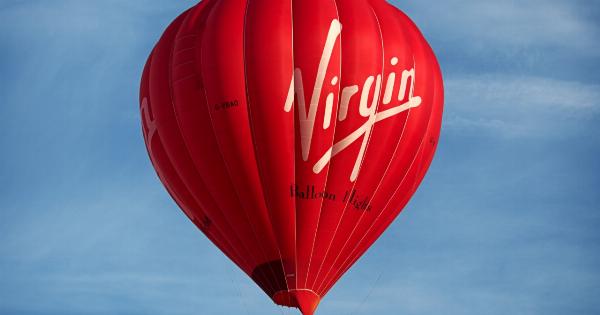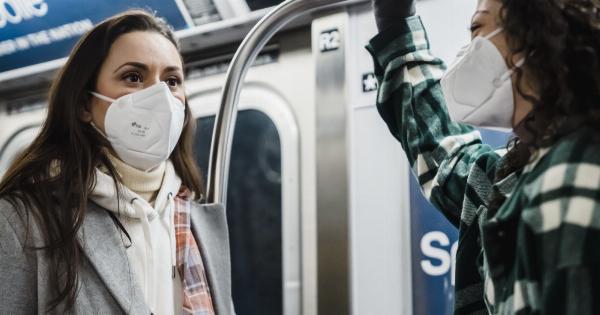The Virgin Hyperloop, a futuristic transportation concept, has stirred both excitement and skepticism since its unveiling.
Promising to revolutionize the way we travel, the hyperloop aims to transport passengers and cargo at near-supersonic speeds through low-pressure tubes. However, with numerous challenges and controversies surrounding its feasibility, there are growing concerns about whether the Virgin Hyperloop project can be saved.
The Hyperloop Vision
The brainchild of Elon Musk, the hyperloop concept was first proposed in 2013 as a high-speed alternative to traditional modes of transportation.
Musk envisioned a system where pods, or capsules, would travel through evacuated tubes, propelled by linear induction motors and low air resistance. The hyperloop promised to cut travel times significantly, providing a greener and more efficient means of transportation.
Technical Challenges
While the hyperloop concept seems promising on paper, there are significant technical challenges that need to be addressed for it to become a reality. One major concern is the issue of maintaining a near-vacuum in the tubes.
Any breach in the system could disrupt operations and compromise passenger safety. Additionally, creating and maintaining the required infrastructure, including long stretches of straight tubes, poses immense engineering and financial challenges.
Regulatory Hurdles
Another obstacle to the hyperloop’s success is the complex regulatory landscape governing transportation systems. Building and operating a new mode of transportation entails complying with numerous safety and operational standards.
The hyperloop technology faces scrutiny from regulatory bodies worldwide, as they grapple with ensuring passenger safety and addressing concerns over potential accidents or system failures.
Public Perception and Trust
Public perception plays a crucial role in the success of any transportation project. While the hyperloop promises to be a game-changer, there is skepticism and mistrust among the public.
Many view the concept as science fiction rather than a viable solution, questioning its safety and overall feasibility. Building trust and garnering public support will be essential for the Virgin Hyperloop to thrive.
Cost and Funding
Financing the hyperloop project is another significant challenge. The ambitious nature of the concept requires substantial investments in research, development, and infrastructure.
Initial cost estimates for building hyperloop networks have been staggering, raising concerns about the financial viability of the project. Securing adequate funding in an already competitive transportation market poses significant hurdles for Virgin Hyperloop.
The Competition
The hyperloop concept has not gone unnoticed by other players in the transportation industry.
Several companies, such as Elon Musk’s own “The Boring Company” and Hyperloop Transportation Technologies, are also working on developing their versions of the hyperloop. This growing competition adds pressure on Virgin Hyperloop to stay ahead in the race and deliver a practical, safe, and efficient transportation system.
Global Implementation Challenges
The global implementation of the hyperloop technology poses several challenges. Each country has its unique regulatory framework, land acquisition processes, and environmental impact considerations.
Adapting the hyperloop concept to different regions and gaining the necessary approvals in multiple jurisdictions could slow down the project’s progress and hinder its global acceptance.
Operational Considerations
Once the hyperloop is operational, there are various operational considerations that need to be addressed.
Managing a complex network of interconnected hyperloop routes, including scheduling, passenger flow, and emergency response, demands meticulous planning and efficient operations. These challenges add to the overall complexity of the project.
The Future of Hyperloop
Despite the significant challenges it faces, the concept of the hyperloop remains compelling.
Proponents of the technology argue that with the right investment, technological advancements, and regulatory support, the hyperloop could revolutionize transportation and overcome the obstacles it currently faces.
Steps for Saving the Virgin Hyperloop Project
To save the Virgin Hyperloop project and ensure its long-term success, several key steps can be taken:.
1. Technology Refinement and Advancements
Continued investment in research and development is crucial to refine hyperloop technology.
Addressing technical challenges such as maintaining a near-vacuum environment, mitigating potential system failures, and improving propulsion systems will enhance safety and reliability. Advances in materials science and manufacturing techniques can also bring down construction and maintenance costs.
2. Collaborative Approach and Knowledge Sharing
To overcome the hurdles faced by the hyperloop, collaboration among industry players is essential. Sharing knowledge, best practices, and lessons learned can expedite progress and avoid reinventing the wheel.
Creating open-source platforms and fostering partnerships between different hyperloop companies can drive collective innovation and problem-solving.
3. Building Trust and Public Awareness
Public perception is a critical factor in the success of the hyperloop. Engaging with the public through transparency, education, and building trust is crucial.
Demonstrating the rigorous safety measures, conducting successful test runs, and showcasing the potential environmental benefits can help sway public opinion and garner support for the project.
4. Collaboration with Regulatory Bodies
Working closely with regulatory bodies from an early stage is vital to ensure compliance with safety standards and gain their confidence.
Collaboration can help define a clear regulatory framework for the hyperloop, address concerns, and expedite the approval processes. Increased dialogue between hyperloop companies and regulators can foster constructive partnerships for successful implementation.
5. Strategic Partnerships and Investment
Securing strategic partnerships with governments, transportation authorities, and private investors can provide the necessary funding and resources for the hyperloop project.
Public-private collaborations can help navigate regulatory challenges, secure land rights, and access existing transportation networks. Investment from established transportation companies can also lend credibility and industry expertise to the hyperloop venture.
Conclusion
The Virgin Hyperloop faces numerous challenges and hurdles, but with concerted efforts, technological advancements, and collaboration, it has the potential to be saved.
Overcoming technical obstacles, building trust among the public, securing adequate funding, and collaborating with regulators are crucial steps to ensure the success of the hyperloop project. Only time will tell whether the Virgin Hyperloop can live up to its promises and become a transformative mode of transportation for the future.






























